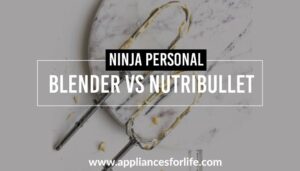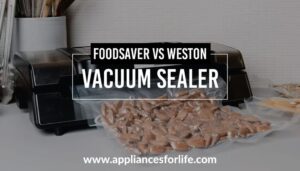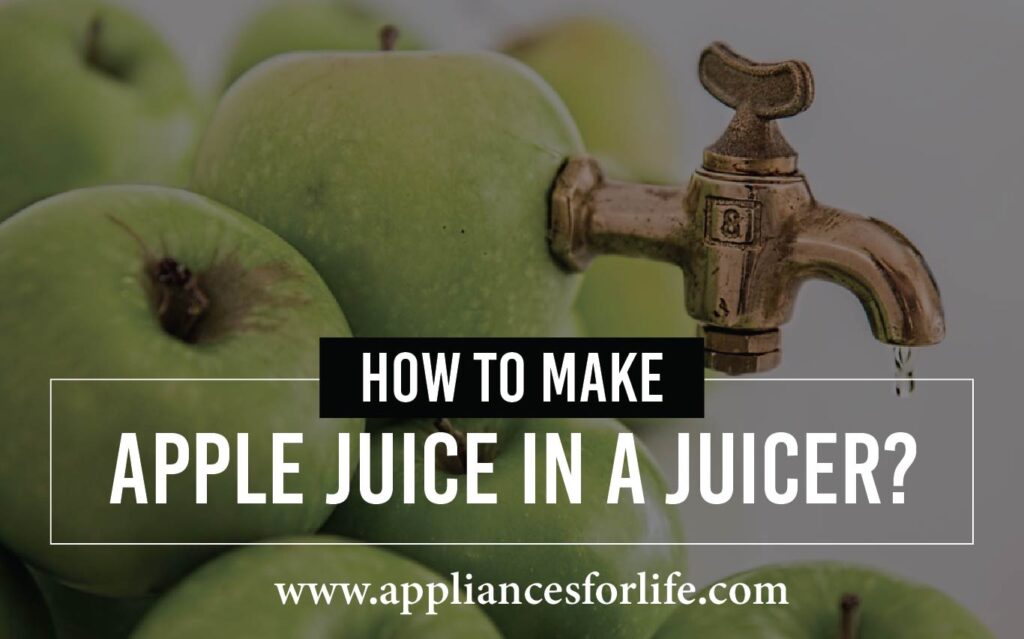- Research has repeatedly shown that apples contain various impressive health benefits and this is why they are the most widely consumed fruit globally. Apples are found in several kinds, from Red Delicious, Fuji or Gala, to tangy green ones, like Granny. Also, apples are incredibly versatile as they are common recipes for pie, cookies, muffins, jam, salads, oatmeal and smoothies. They also make a great snack on their own or wedged and smeared with nut butter.
- Whether you crave a sumptuous summer drink or you just have an apple tree with an abundance of apple fruits at your disposal, learning how to make apple juice in a juicer is a very useful skill- not only will you be able to achieve your desired fruity juice flavour but you will also be able to make this happen whenever you so desire. This article will take you through some of the benefits of consuming apple juice and expose you to how to make a naturally sweet, unfiltered cloudy apple juice that’s perfect for enjoying alone or with other recipes!
Over 7,000 fruits are produced worldwide, and out of this vast number, the Apple fruit stands out as the most widely consumed fruit worldwide. It is indeed no surprise the Apple fruit is so widely and popularly accepted; they are quite versatile, serving a wide range of functions- they are often used in recipes like cookies, muffins alike, pies and of course, they are used for smoothies. In addition to their culinary versatility and numerous colors and flavors to choose from, apples are an exceptionally healthy fruit with many research-backed benefits. Apples can be enjoyed as a whole piece, bitten on, or purred into smoothies. Its juice can also be extracted, whether with pulp or without. Apart from the fact that an apple is a perfect food substitute- a snack, it is composed thoroughly of immense nourishment values, which will be observed in the subsequent sections
Table of Contents
ToggleApple fruit juice is Immensely Nutritious
Apples are rightly considered Nutrient-dense fruits, implying that they conveniently supply numerous nutritional benefits per pour. The current American Dietary Guideline recommends at least 2 cups of apple fruit juice daily for a 2,000-calorie diet. A 200 grams of apple juice offers the following nutrients. All you need to do is extract its juice with a juicer. You do not need to buy one; you can also rent a juicer for your extraction. According to the American Dietary Guideline research;
- Calories: 104
- Carbs: 28 grams
- Fiber: 5 grams
- Vitamin C: 10%
- Copper: 6%
- Potassium: 5%
- Vitamin K: 4%
In apple juice, you will also have rich Vitamins E, B1, and B6 values. Vitamin E is a very effective fat-soluble antioxidant, while B1, also known as thiamine, is very much needed for growth and development, and B6 is highly essential for protein metabolism. It is important to know that apples are also a very good source of polyphenols which are an important group of antioxidants themselves. In case you are wondering what health functions polyphenols serves, they are compounds that protect your cells from free radicals, like dangerous molecules that worsen already chronic conditions like heart disease or cancer. There is a long list of nutritional benefits derivable from an apple fruit- To completely realize all these benefits, you need to leave its skin on; this is advisable mainly because the skin contains half of the fiber and most of the polyphenols in apple fruit. Another reason you may want to leave the skin on as you juice or eat is to extract the peculiar flavour of the skin.
Apple juice may support weight loss
An apple is a decent fruit for dehydration because it is completely saturated with water. It is also highly rich in fiber, making it filling and rich in calories.
Because apples fill you up when you have consumed only a little, it works as a weight loss strategy and helps control your appetite. Hence, the increasing feeling of fullness eventually tricks you into reducing your energy intake. In one study, eating whole apples increased feelings of fullness for up to 4 hours longer than consuming equal amounts of apple purée or juice. This happens because whole apples reduce gastric emptying — the rate at which your stomach empties its contents.
Another reliable research reveals that apple intake may significantly reduce Body Mass index- a weight-related risk factor for heart disease.
Apples are good for the heart
Apples are good for rejuvenating the heart, and their consumption has been very much linked to the lowered risk of heart disease. Apples are so good for the heart because they contain soluble fiber. The kind that helps lower the blood cholesterol level. In addition to this, Apples offer some Polyphenols nutrients which help significantly lower blood pressure. It also contains flavonoids that can help prevent stroke.
Plus, flavonoids can help prevent heart disease by lowering blood pressure, reducing LDL cholesterol oxidation, and reducing atherosclerosis, which is the buildup of plaque in your arteries. Another study has also linked eating white-fleshed fruits and vegetables, like apples and pears, to a reduced risk of stroke. For every 1/5 cup (25 grams) of apple slices consumed daily, the risk of stroke decreased by 9%.
In summary, Apples promote heart health in several ways because they are rich in fiber which helps lower cholesterol, and contain other nutrients that help reduce blood pressure and stroke risk.
Reduces the risk of Diabetes
The consumption of Apples and Apple juice is confirmed to reduce the risk of type 2 diabetes. A series of studies have revealed that eating apples and pears is largely associated with a reduction of the risk of type 2 diabetes, up to 18 percent. As a matter of fact, serving just one per week will reduce the risk of type 2 diabetes by at least 3 percent.
Their high content of the antioxidant polyphenols quercetin and phloridzin could explain this beneficial effect. Quercetin’s anti-inflammatory effects may reduce insulin resistance, a big risk factor for the onset of diabetes. Meanwhile, phloridzin is believed to reduce sugar uptake in the intestines, reducing blood sugar load and thereby reducing diabetes risk.
Apple consumption prevents cancer
Apples and apple juice, by extension, contain anti-oxidants. Anti-oxidants are found to be effective against certain types of cancers, including lung, breast, and digestive tract cancers. Apples are so effective for cancer prevention because they contain polyphenols which keep cancer cells from duplicating in the body. Hence, it is confirmed that a high intake of cancer effectively prevents cancer-related deaths.
In addition to the above, apples are also rich in fiber content, and they will also contribute to their cancer-fighting properties. With more certainty, another research shows that apple pectin fiber could inhibit the growth of cancerous cells and even trigger their death. However, further human research is needed to better understand the possible link between apples and cancer prevention — for example, to identify adequate amounts and eating timing
Apples could fight Asthma
As stated originally, apples contain very potent anti-oxidants, and these anti-oxidants are very rich to protect one’s lungs from oxidative damage. An excess of harmful molecules called free radicals can cause oxidative damage. This may lead to inflammatory and allergenic responses in your body. Furthermore, the apple skin is rich in anti-oxidant quercetin, which helps regulate the immune system and reduce inflammation. They can also be good for treating other allergic inflammatory diseases like sinusitis.
Best Apples for Apple Juice
When it comes to making tasty apple juice, there are several options to pick from. Your choice will be largely influenced by the taste you want. The apples you pick will also determine the level of acidity, sweetness, and color of your juice. Thus, choose wisely!
Fuji: The Fuji apple is not difficult to identify as they are round and red with a creamy white interior. Fuji apples are wonderfully sweet and very juicy – perfect for homemade apple juice.
Honeycrisp: Honeycrisp apples are slightly more expensive than many other apple species. Hence, due to the price, most people prefer to go for a less expensive option, but they are still sweet, crunchy, and super juicy- making them an excellent option for juicing. They are not hard to identify, as you will find them often with bright red skin.
Gala: This category is rounded, pale red/yellow coloring. Gala apples are firm and crisp with a slightly mild, sweet flavor with notes of vanilla. Make for a great drink.
Red Delicious: deep red outside with a sweet yet mild flavor and high level of antioxidants. This apple is used a lot as a “lunchbox” style apple and is fairly bland – but also low cost and can be boosted with other apples. It’s not super juicy, but still relatively juicy and makes for a great, balanced, all-purpose apple juice.
Golden Delicious: golden yellow-green color with a sweet, slightly rich, honey-like flavor.
McIntosh has a mildly sweet flavor but a bold “apple” flavor – perfect for homemade apple juice with an “apple cider juice” flavor.
How To Make apple juice in a juicer
Learning to make apple juice in a juicer is necessary if one must extract all the nutrients and deliciousness the apple contains. A juicer is so versatile that you can even extract other fluid with it. You can even make lemon juice in a juicer and so much more. This section contains information on the safe and effective extraction of apple juice from apples.
Gather the apples
It is imaginable that this stage of apple juice is the easiest to deal with. Still, when faced with the difficulty of picking the right apple fruits, we may be forced to think otherwise-especially if we are obsessed with making a desired apple juice flavor. In fact, You can make apple juice from any type of apple, but the juicer varieties are the best to get the most juice from. Red Delicious, Gala, and Fuji are my favorite apples to use. And you can extract their juice using a cold press juicer.
Cut them into smaller pieces
Depending on the size of your apples. You may need to cut them into smaller pieces. If the apples are too large, the juicer risks being ‘choked’ during juicing. Also, cutting the apples into smaller pieces makes your juicing significantly faster. It is important to note that you do not necessarily need to peel the apples before feeding them into the juicer. The back of an apple has immense nutritional value. As explained before, hence it is important to consume its juice, to realize all its values. Similarly, some people like to remove the seeds from the apples before putting them in the juicer. This is totally optional and up to you. Apple seeds do contain a small amount of a cyanide compound, but the body can handle this in small amounts without worry. Again, totally up to you. If I’m feeling lazy and want a quick juice, I’m probably just going to throw the apples in whole.
After gathering your fresh apples and cutting them into pieces, when necessary, all that is left is for you to feed them into your juicer, and watch it perform some magic.
Squeezing the juice manually
Although you will easily find the best juicers under 50$ that will do the task effectively if you prefer to go all-natural, this is an alternative to the method described above is a machine-free method. For this version;
First, wash the apples if needed. Then grate them into a muslin/cheesecloth-lined bowl (or use a strainer). Once grated, pull the cloth together, twist the top and wring it well/ squeeze by hand to remove as much liquid from the apples as possible.
To simplify the process, freeze the grated apple overnight, then leave it to defrost at room temperature before squeezing the liquid out. When thawing, the apple will soften enough to make it easier to squeeze.
How To Store Your Apple Juice
The consumption of homemade apple juice within 24 hours is recommended to enjoy its best flavor and nutrient levels. In other words, that desired flavor, which has influenced your choice of apple fruits, may not be attainable at the end of the day if your apple juice is left to remain at the end of the day. The same applies to the nutrients in apple fruit juice- they will disappear gradually if utilized within 24 hours of juicing. However, the leftover juice will last up to 5 days in the refrigerator in an airtight container. It will brown over time as it oxidizes.
What to do with leftovers: freeze any leftover juice as quickly as possible for optimal nutrient retention. I recommend doing so in ice-cube trays for “portioned” juice. You can store the juice in the freezer for several months (4-6). You can then add the ice cubes to other drinks, smoothies, and slushies – or allow them to thaw in the fridge first.
FAQs
Can you put an entire apple in the juicer?
It is a ‘Yes’ to this question; you can throw into your juicer, your entire apple fruit, so long as it is not too big to cause the juicer to choke. However, in the situation of large apple fruit, it is important to chop it into smaller pieces, to enjoy a speedy juicing process. You can also extract the seeds, to avoid the sour juice that comes from it but the back should be left for juicing- it is incredibly rich in nutrients.
Should you peel apples before juicing?
Peeled apples will yield juice with fewer vitamins, minerals, and fiber (and often color, too). However, without the skin, the juice will have a crisper, slightly sweeter flavor. I like to include it for the fiber and color – but it’s up to you.
Is apple juice poisonous?
It is only logical that, from the topics addressed above, the consumption of apple juice is totally safe. Hence if you are still wondering- Is homemade apple juice good for you?. No need to wonder anymore; all the nutrients you want, you’ll find in it.
15 MINUTES
ESTIMATED TIME DESIGNING AND UPLOADING THIS ARTICLE
10 HOURS
ESTIMATED TIME RESEARCHING AND WRITING THIS ARTICLE
You Might Also Like

What is a Super Capacity Dryer?
A dryer is one of the dynamic duo that maks your laundry an easy task to do. With a dryer, you will never need to wait hours for your clothes to dry out, evenly. Dryers may not be as flashy as their washer counterpart, but

Taiff Hair Dryer and 9 Other Things You Didn’t Know
A hairdryer, in basic terms, is an electrical device for drying a person’s hair by blowing warm air over it. The Taiff hair dryer holds the unique spot of being the only hair dryer that produces both negative and positive ions. In this segment, 1700W

Ninja Personal Blender vs Nutribullet
If you’ve always wanted the best blender brands to face off, then topics like Ninja personal blender vs Nutribullet or, reversely, Nutribullet vs Ninja personal blender should not be strange to you. In this article, we’re going to compare Nutribullet and Nutri Ninja blenders. If

Should You Buy Extended Warranty on Appliances
If you’re purchasing appliances, warranties are not something you should overlook as they’re very important. Should you buy an extended warranty on appliances? Let’s find out in this article. Also in this article, we’re going to be looking at the difference between an extended warranty

For most folks, the kitchen is a great place to be because they see cooking as a hobby rather than an obligation others see it as. If you have a stovetop kettle in your kitchen but know little about getting the best out of it,

FoodSaver vs Weston Vacuum Sealer
Every household that takes food preservation very seriously must have, at one point, thought of getting a vacuum sealer. With each day that goes by, vacuum sealers are earning unrivaled popularity in many countries across the globe, especially the United States where the appliance market

What Can You Do With a Ninja Blender?
The kitchen is one of the busiest places around the house, and that’s because that’s where cooking activities are carried out. It also happens to be one of the most important parts of every household with the most appliances. In this modern world, anyone who

How Does a Top Loading Washing Machine Work?
Knowing how each washing machine type works will give you a lot of control over every situation if problems arise, especially when you’ve never been familiar with them. If the question ‘how does a top load washing machine work’ has been ringing in your head

Top 3 Best 26-inch Wide Washing Machines
With washing machines getting very popular with each that passes by, we’re not surprised that people are looking to explore all the available options that are suitable for them. People that love portable washers have been on the look out for the best 26-inch wide

Top 3 Best Blenders for Soup Making
If you’ve been paying attention to how blenders have evolved into one of the best food processing machines in the world today, you’ll realize they were always destined to be. Everyone is quite happy with the growing popularity blenders are enjoying, but many years ago,

